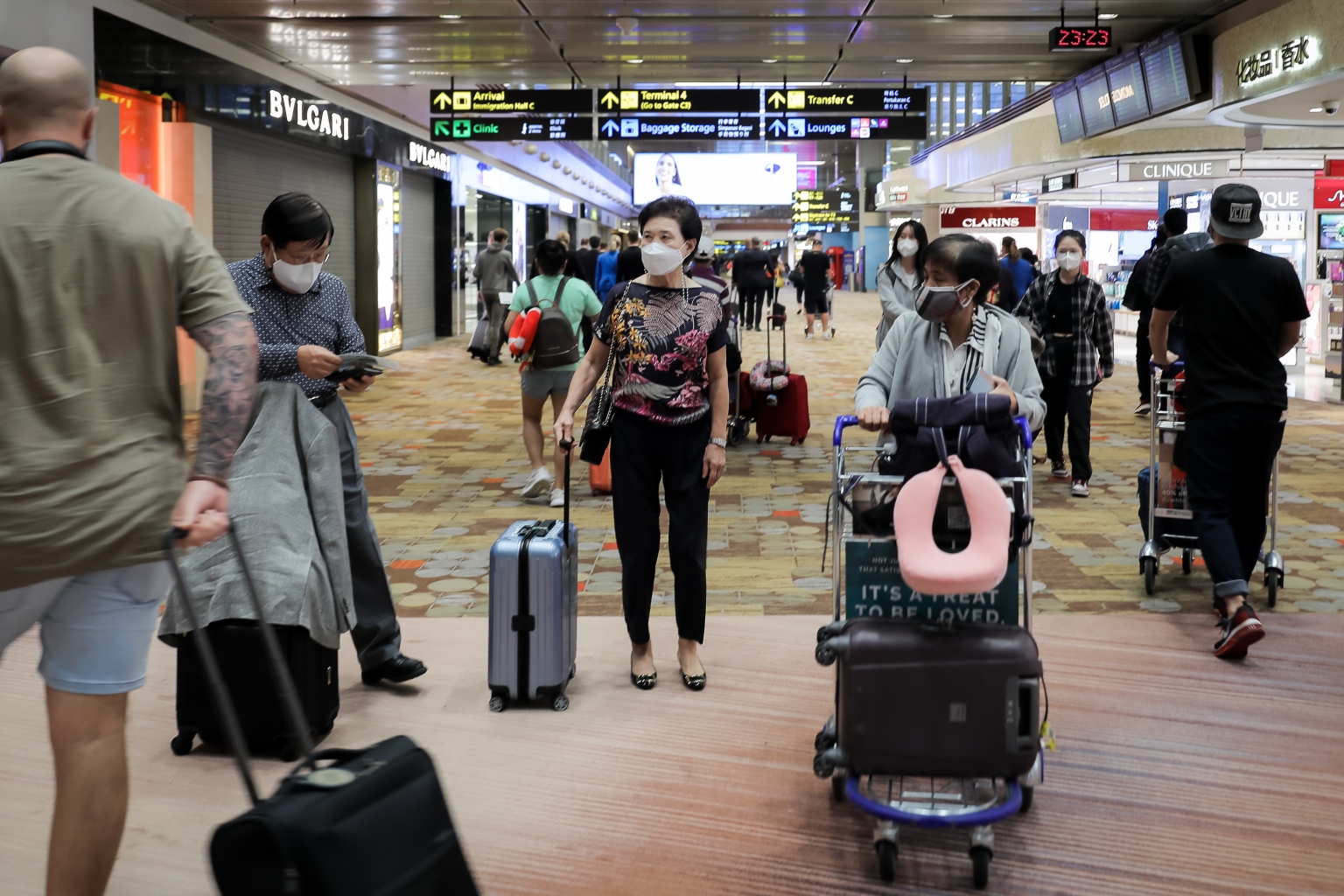Changi Airport leading recovery within Asia-Pacific; focus now on ramping up capacity: Iswaran
Sign up now: Get ST's newsletters delivered to your inbox

The focus now is on ramping up capacity at Changi to meet future demand, especially during the year-end peak travel season.
ST PHOTO: GAVIN FOO
Follow topic:
SINGAPORE - Changi Airport is leading the post-pandemic recovery within the Asia-Pacific region, with weekly passenger traffic hitting 55 per cent of pre-Covid-19 levels in the first week of last month (July).
There are also passenger flights connecting to 108 cities as at last month - close to two-thirds of the connections that the airport had before the pandemic hit.
This puts Changi ahead of major air hubs in the region, such as Incheon (Seoul), Hong Kong and Bangkok, Transport Minister S. Iswaran told Parliament on Tuesday (Aug 2).
But he also acknowledged that the pattern of recovery across the world has been uneven, and that airports in Europe, North America and the Middle East, where borders were reopened earlier, have bounced back more quickly.
For instance, passenger traffic at air hubs in Dubai, Doha and Istanbul exceeded 90 per cent of their pre-pandemic levels even before June, and connectivity at these airports is back to 90 per cent of 2019 levels, or more, Mr Iswaran added.
While the initial target of restoring air travel in Singapore to 50 per cent of pre-Covid-19 levels by the end of the year has been "well and truly met", the minister said the focus now is on ramping up capacity at Changi to meet future demand, especially during the year-end peak travel season.
He was responding to Workers' Party MP Louis Chua (Sengkang GRC), who had asked whether the authorities would be revising their 2022 and 2023 passenger traffic targets in the light of the recent recovery.
Mr Iswaran said: "It is difficult to set a target at this stage of our recovery for the total volume of passengers that can come in. And the reason is simply that source markets are at different stages of managing the recovery from Covid-19."
He added: "Key markets like China, Japan and North-east Asia in general are still working their way through, and we are not sure when exactly and how exactly they will make changes."
But Mr Iswaran also said that demand for air travel remains fundamentally strong, and he expects recovery at Changi Airport to gather pace when countries such as China and Japan fully reopen their borders.
He added that Changi Airport Terminal 4 will reopen on Sept 13, and the southern wing of Terminal 2 will be opened for departure operations in October to ensure that the airport will be ready to manage the higher traveller flows.
These moves will return the airport's handling capacity to its pre-pandemic level of 70 million passengers a year.
Efforts are also ongoing to build up manpower at the airport and "restore the traveller experience that Changi is renowned for", Mr Iswaran said.
He said the aviation sector had lost a third of its workforce on account of Covid-19, and that recovering from that is a major challenge - both in terms of recruitment and getting new workers ready for operations.
Manpower woes have plagued some of the world's busiest airports, resulting in cancelled flights, lost baggage and other disruptions.
Last month, Heathrow Airport in London set a limit of 100,000 daily departing passengers and asked airlines to stop selling tickets for summer flights, blaming a lack of airline ground handlers for the chaos.
Said Mr Iswaran: "One only has to consider the experience in many other airports around the world to appreciate the enormity of the task."
In June, Changi Airport handled 2.93 million passengers, slightly more than half of June 2019 levels.
In contrast, Suvarnabhumi Airport in Bangkok handled 1.4 million international passengers in June, 35 per cent of 2019 levels, and Incheon Airport handled 1.3 million international passengers, or 21 per cent of pre-pandemic levels.

